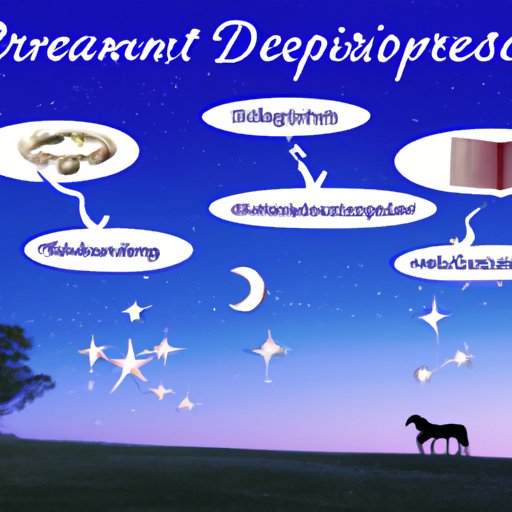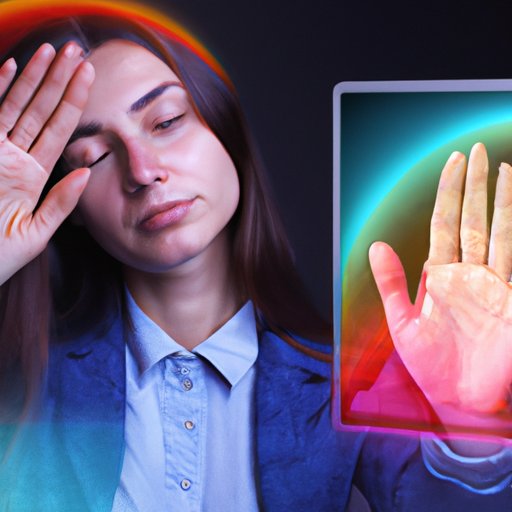Introduction
Have you ever woken up from a dream and wondered how it felt so real? Dream realism, or the sensation that your dreams are as vivid and lifelike as your waking experiences, is a common phenomenon that has puzzled scientists and psychologists for years. But why should we care about dream realism? What impact does it have on our daily lives? This article will explore the science and psychology of dream realism, as well as techniques for controlling and interpreting your dreams.
The Science Behind Dream Realism: Exploring the Human Mind
The first step in understanding dream realism is to examine the role of the human brain in the dream process. While scientists still don’t fully understand why we dream, they have identified the different stages of sleep and how they affect dream realism. During rapid eye movement (REM) sleep, the brain is highly active and dreams are more likely to be vivid and realistic. Additionally, theories suggest that certain areas of the brain involved in sensory processing, memory, and emotions may be particularly active during dream states.
Fulfilling Fantasies: How Dreams Manifest Our Desires
Another factor influencing dream realism is the connection between dreams and our deepest desires and fears. Experts believe that dreams serve as a way for our minds to process emotional experiences and fulfill unmet needs. As a result, dreams can often reflect our waking desires and fears in symbolic or metaphorical ways. Common dream themes, such as flying or falling, may represent our sense of control or lack thereof in waking life.
Lucid Dreaming: Techniques to Control Your Dreams
For those who want to take control of their dream experiences, lucid dreaming can be a powerful tool. Lucid dreaming involves the realization that you are dreaming and the ability to control or direct the dream content. Benefits of lucid dreaming include improved creativity, reduced anxiety, and the ability to overcome personal fears or obstacles. Techniques for inducing lucid dreams include reality testing, dream journaling, and visualizations.
The Role of Emotions in Dream Realism
Emotions play a significant role in dream realism, as many dreams are influenced by emotional experiences or stressors. In fact, studies show that people who experience increased negative emotions during the day are more likely to have emotionally charged dreams at night. Tips for managing emotional dreams include relaxation techniques, such as meditation or deep breathing, and engaging in positive activities before bed.
Recurring Dreams: What They Mean and Why They Feel Real
Recurring dreams are a common occurrence that can be particularly unnerving due to their persistence and realism. Experts suggest that recurring dreams could be a reflection of unresolved issues or conflicts in our waking lives. Common recurring dream themes, such as being chased or falling, may represent feelings of anxiety or insecurity. Strategies for breaking the pattern of recurring dreams include confronting the underlying issue or using visualization techniques to change the dream narrative.

Dream Interpretation: Understanding Symbolism and Meaning in Your Dreams
Understanding the symbolism and potential meanings of your dreams can be a powerful tool for personal growth and self-reflection. Dreams often contain symbolic or metaphorical representations of our waking lives, and interpreting these symbols can reveal deeper insights into our thoughts, feelings, and behaviors. Tips for deciphering dream symbols include keeping a dream journal, considering the emotions and context of the dream, and seeking the guidance of professional dream interpreters if needed.
The Link Between Virtual Reality and Dream Realism: What’s the Connection?
As technology continues to evolve, many are questioning the connection between virtual reality (VR) experiences and dream realism. Experts suggest that immersive experiences in VR may have a similar impact on the brain as vivid dreams, and as a result, could become increasingly difficult to distinguish from reality. However, others argue that the lack of actual physical experiences in VR make it fundamentally different from real-life dreams. Ultimately, the impact of virtual reality on dream realism remains a topic of ongoing research and debate.
Conclusion
Dream realism is a complex phenomenon that is influenced by a variety of factors, from brain activity to emotional experiences. By understanding the science and psychology behind dream realism, individuals can begin to take control of their dream experiences and gain valuable insights into their own thought processes and emotions. Whether you’re hoping to interpret your dreams or learn to control them, the study of dream realism offers a fascinating and rewarding exploration of the human mind.
